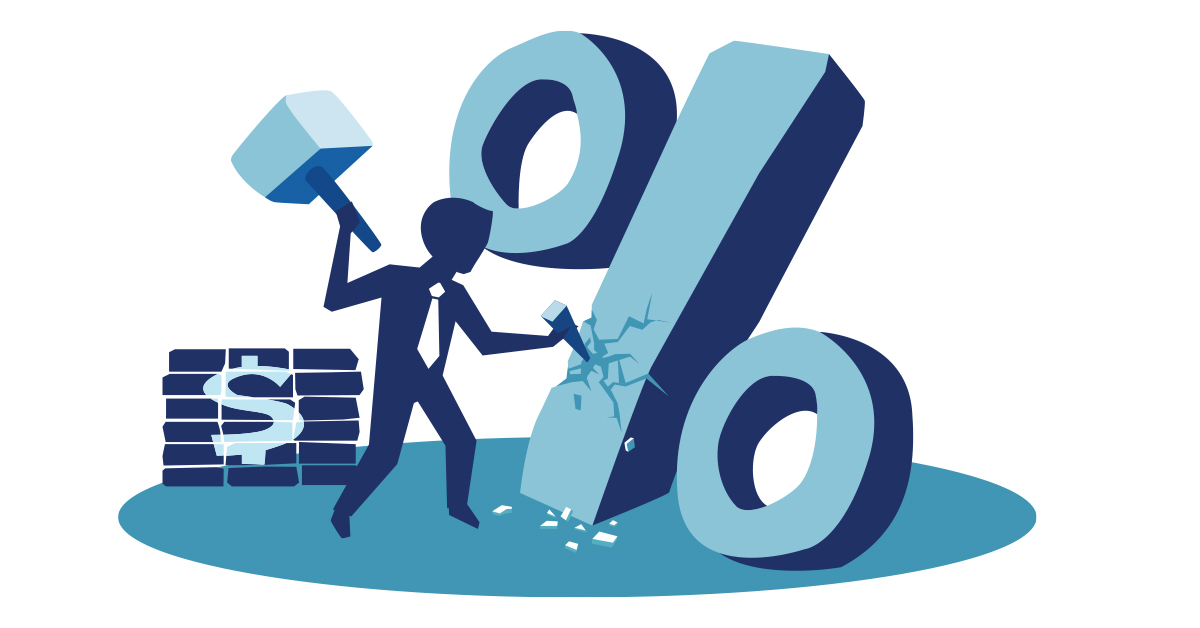Imagine a scenario where a foursome of golfers gather prior to the first tee box. After checking in with the starter and then waiting for their official tee time, the conversation turns to mortgage rates. All four golfers are new homebuyers.
In this scenario, all the golfers purchased their homes in the last year. Just as they would measure themselves against the distance of each other’s drive on this par 4 — they also measure themselves against what each other reports as their 30-year fixed rate mortgage on their new conventional loans.
All four golfers find that they have credit scores of 740-plus and all made 25% to 30% downpayments on their single-family homes. They decide that the person with the highest rate has to tee off first. They each report, 6.875%, 7.375%, 7.125% and then the last person reports 7.499%. Ooof.
Naturally, the one with the 6.875% puffs out their chest with pride and the one with the 7.499% puts his head down — shamefully walks the steps to the first tee box feeling like he lost and was ripped off by his lender. But should the conversation be just about rates? Or should it also be about what each golfer paid to access their respective rate?
Rate centered
What if the golfer with the 7.499% interest rate got a $5,000 lender credit while the golfer with the 6.875% rate paid $18,350 to buy the rate down? Likely few golf course conversations on homebuying veer this far into a discussion about discount points and fees a borrower pays to a mortgage lender to get a lower interest rate.
Usually buying down the mortgage rate involves putting up 1% of the total loan for each 0.25 percentage point decline in the final rate. For instance, a borrower who takes out a $500,000 loan could pay $5,000 upfront to move the loan interest rate from 6.5% to 6.25%. Clients are becoming more and more aware of discount points in the loan equation.
For clients who are interested in discount points, you need to answer the, ‘Is the juice worth the squeeze’ question, meaning is the lower payment worth the cost paid for the lower rate? That varies from borrower to borrower, but one question to ask is how long the buyer expects to be in the home and whether they plan to keep in its current occupancy type (primary, secondary or investment.)
“In 2018, 36.5% of all conventional purchases … paid points to buy the rate down. In 2023, that rose to 58.8% of homebuyers.”
Freddie Mac looked at this very issue. The government-sponsored enterprise tracked the percentage of folks (using the same credit scores and loan-to-value ratios as these hypothetical golfers) over six years and looked at what percentage paid discount points on their mortgages. Of those who did, Freddie Mac also looked at how many points they paid.
In 2018, 36.5% of all conventional purchases (using the specs of 740-plus credit score, with 25%-30% down) paid points to buy the rate down. In 2023, that rose to 58.8% of homebuyers. For those that did pay points to buy the rate down, how much did they pay? In 2018, on average, it was 0.63 points. Last year, it rose to 0.99.
Qualitative focused
What does this look like when the conversation changes to a cash-out refinance? In 2018, 48% of cash-out refinances contained discount points; that number jumped to a whopping 82.4% in 2023. Discount points paid in 2018 on cash-out refinances average 0.92 points. In 2023, that number nearly doubled to 1.76 points.
A fascinating point in the study is that it varies widely from state to state. In 2023, for example, 74% of prime homebuyers in Oregon paid discount points but across the country in Vermont, only 36% of prime homebuyers did. There is no data to explain this discrepancy. Culturally, are Oregonians more likely to chase a lower rate than Vermonters?
“Freddie Mac also pointed out yet another twist in the data. Folks that paid for points had a higher rate on average — yes, higher — than folks that did not pay points to buy the rate down.”
Freddie Mac also pointed out yet another twist in the data. Folks that paid for points had a higher rate on average — yes, higher — than folks who did not pay points to buy the rate down. That’s not a typo. Last year, through November 2023, the average effective rate on purchase mortgages for those who bought points was 6.86%. For those who didn’t buy points, their rates were on average 6.69% or 0.17% less.
Are homebuyers who don’t pay points better negotiators than homebuyers that choose to pay points? Are homebuyers who don’t pay discount points more qualitatively focused and homebuyers less focused on the bottom line?
● ● ●
Either way, mortgage originators who are competing against other lenders to earn a potential client’s business should realize that they need to paint the complete picture for the borrower. Is a rate discussion being had to appease the client’s ego? Or is it to show the math to help calculate whether the lower monthly payment is worth the cost of the discount point? There is no requirement for an originator to calculate a break-even point of paying the discount points versus a lower monthly payment. But it can be argued that there is a competitive, if not moral, obligation to help the borrower understand this calculation.
Author
-

Eric Simantel is a branch manager and mortgage originator for the Ryder Mortgage Group (dba C2 Financial) in Portland, Oregon. Simantel spent more than 17 years in the sponsorship and advertising world prior to getting his mortgage license in 2020. He received his MBA from the University of Oregon in 2002. He also earned a bachelor’s degree in marketing from San Diego State University in 2000.




